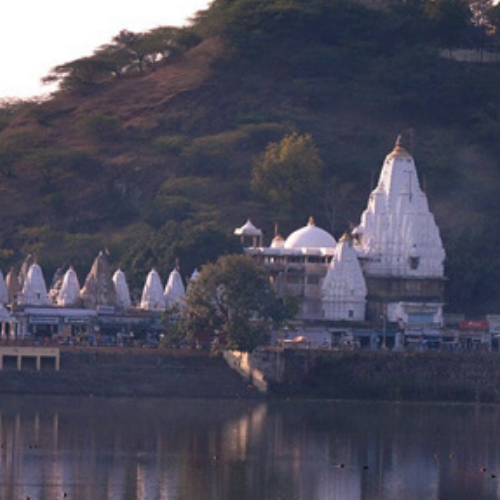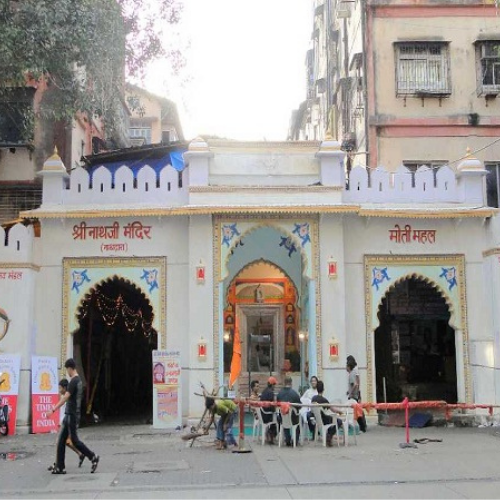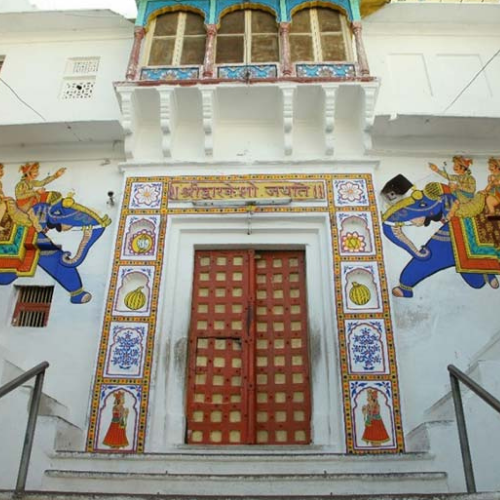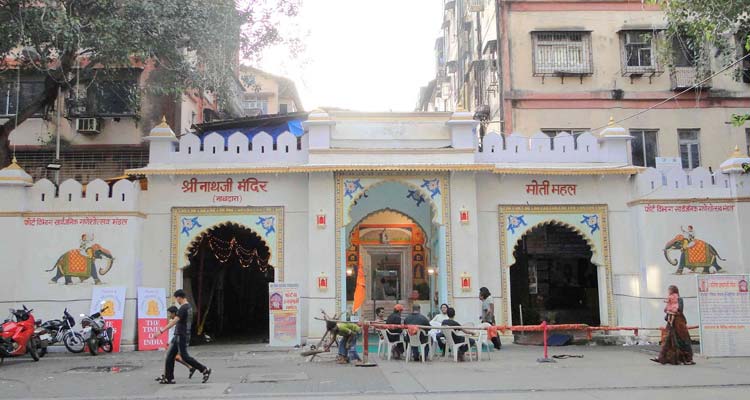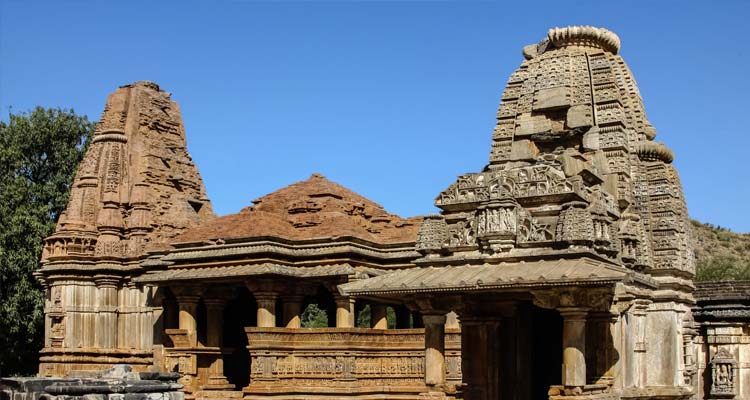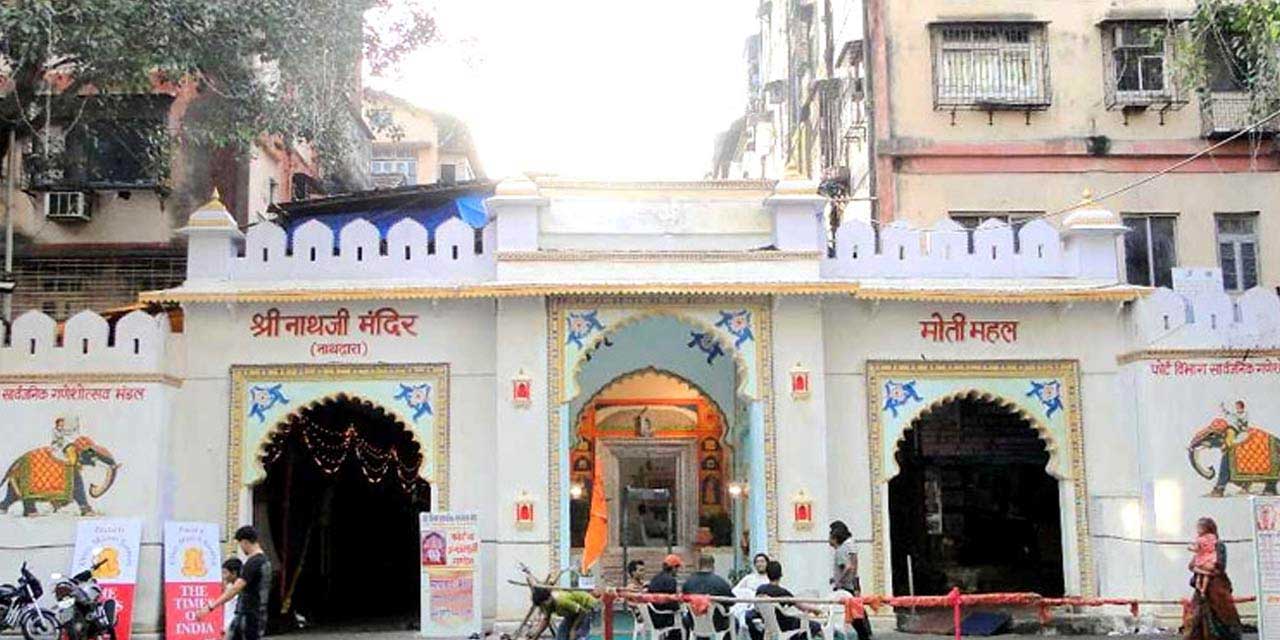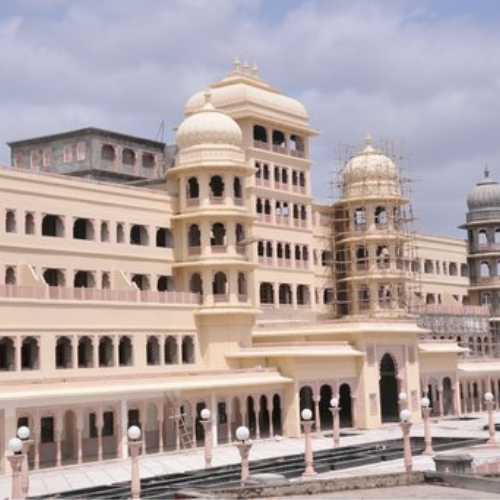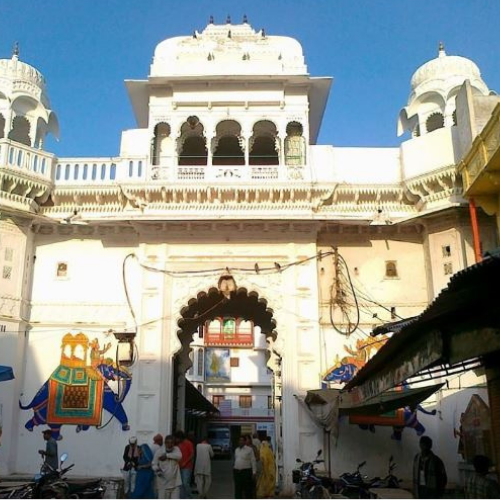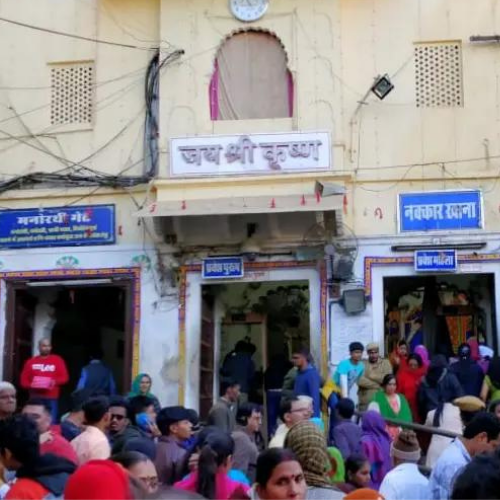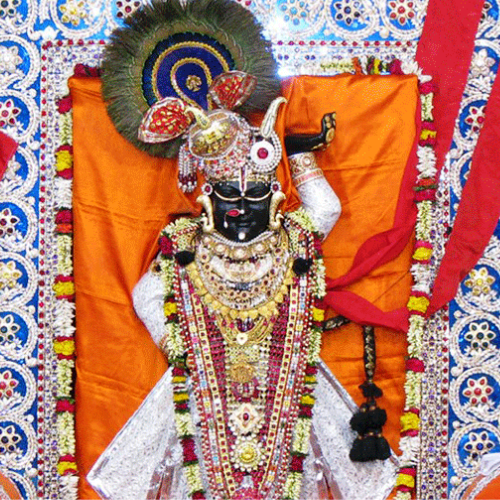Nathdwara and Shrinathji are used interchangeably for this small town situated towards the northeast of Udaipur in Rajasthan, on the banks of River Banas. The whole town revolves around the ‘Thakur Ji Ki Haveli’ or what tourists call Nathdwara temple. Dedicated to the Shrinathji Swaroop of Krishna Avatar of Vishnu. This town re-creates the Braj Bhumi in this town. Is a smaller version of Braj Bhumi – the land that belongs to Krishna and his Krishna Leela.
SHRINATH JI - THE AVTAR OF SHRI KRISHNA
Some accounts say that Shrinathji is an avatar of Krishna, however, he is a form of Krishna himself, an avatar of Vishnu, who took birth in the Dwapara Yuga and gave the message of the Geeta to the world. Shrinathji is Krishna in the form of a 7-year old child lifting the Govardhan Hill with the little finger of his left hand.
Architecture Of Shrinath JI Temple -
It is believed that the architectural design of the Shreenathji Temple Nathdwara is similar to that of the Nand Maharaj temple in Vrindavan. The architecture of the Shrinatji temple is unlike any other temple. It is not designed as per the typical temple architecture of India. In fact, it is more like a palatial house, in keeping with the belief that it is the house or Haveli of Shrinathji.
Shrinathji haveli has many paintings depicting Shrinathji miracles and Shreenathji stories. The temple is made up of different rooms which have their own functions like any other residential place. Passages and courtyards connect the rooms. The only element of temple architecture is the Shikhara with the Kalasha that marks the top of the temple. There are seven flags fluttering atop the Shikhar along with a Sudarshan Chakra which is symbolic of the Pushtimarg sect of Vaishnavism founded by Vallabhacharya.
DARSHAN :-
There is 8 darshan that devotees can do at the temple that is in sync with the activities of the Child Shrinathji and 8 meals that are given to him. Since the Krishna here is treated as a living entity rather than just an idol, his daily routine follows getting up, eating, daily rituals like bathing, getting ready, playing, and sleeping. The 8 darshan or 8 times when devotees get to see him are:
1. Mangala Darshan
The first Darshan of the Day. The main doors of the temple are not opened for this temple, as the emotion is that of a child who has just woken up. He should neither be tempted to go out nor be overwhelmed by the crowds who come to see him. Shrinathji is dressed as per season – light cotton clothes in summers and warm quilted ones in winters. Arti is performed to ward off the evil spirits of darkness.
2. Shringar Darshan
An hour after the Mangala Darshan, Shringar of Shrinathji is done when he is adorned with all fine things with a priest holding a mirror so that he can admire himself. He is offered dry fruits and sweets and only after that his favorite flute is handed over to him
3. Gwal Darshan
This is the time when Lord Shrinathji is informed that all the cows in his cowshed are well and is offered Makhan Mishri and other milk-based food. This is the time when he is supposed to be playing with his friends.
4. Rajbhoga Darshan
This is the most elaborate darshan of the day when the baby God is offered the main meal of the day. I was fortunate to visit the temple at the time of Rajbhog darshan. The announcement of this darshan is made from the rooftop with an elaborate sprinkling of perfumes. After this darshan, the Lord retires for the next three hours, and the temple is closed for the devotees.
5. Uthapana Darshan
In the afternoon the baby Shrinathji is again woken up by the blowing of a conch shell. This darshan indicates the time when the cowherds come back home with their cows.
6. Bhog Darshan
A light meal is offered for this darshan that is specially meant for Swamini Ji – though in my mind I am not sure if Swamini Ji is Yamuna Ji who is generally depicted with Shrinathji here or is she, Radha Ji.
7. Arti
This darshan is done around dusk when the cowherd lord would have come home from the woods and the mother does the Arti to ward off any evil eye. A light meal is offered along with the flute so that the lord can entertain himself and those around him.
8. Shayan
This is the time to retire and it is announced by telling the cook to come early the next day. Paan Beeda is offered along with other foods. This darshan is done for 6 months in a year as it is believed that for the rest of the six months he goes to Vraj or Braj to give darshan to Brajvasis.

